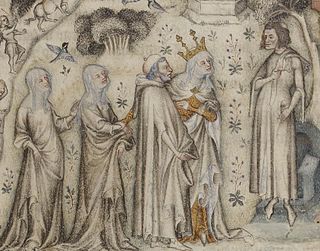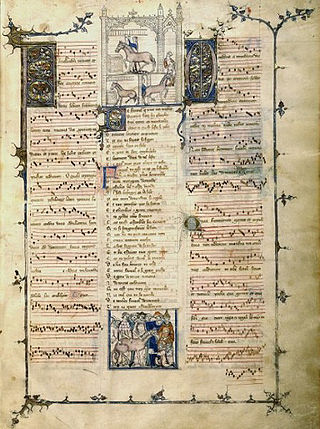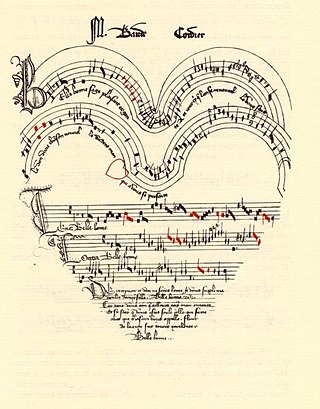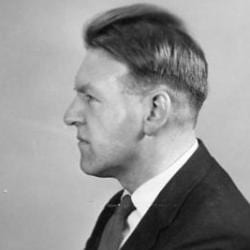This article needs additional citations for verification .(March 2020) |
Antonello da Caserta, also Anthonello de Casetta, Antonellus Marot, was an Italian composer of the medieval era, active in the late 14th and early 15th centuries.
This article needs additional citations for verification .(March 2020) |
Antonello da Caserta, also Anthonello de Casetta, Antonellus Marot, was an Italian composer of the medieval era, active in the late 14th and early 15th centuries.
Essentially nothing is known of Antonello's life. Earlier in the 20th century, Nino Pirrotta thought Caserta was a Neapolitan composer, but because most of his surviving works are in northern Italian manuscripts, this is now doubted ( Günther and Stone 2001 ). Allusions in his texts suggest that he worked for the Visconti family in Milan around the turn of the 15th century ( Nádas and Ziino 1990 ), and a "frater Antoniello de Caserta" mentioned in an archival document may indicate that he was at the Visconti court in Pavia in 1402 ( Günther and Stone 2001 ). Antonello was a monk, though the order to which he belonged is not known.
Antonello da Caserta is one of the more renowned composers of the generation after Guillaume de Machaut. Antonello set texts in both French and Italian, including Beauté parfaite of Machaut; this is the only surviving musical setting of a poem by Machaut which is not by Machaut himself. He was highly influenced by French musical models, one of the first Italians to be so. One of his ballades quotes Jehan Vaillant, a composer active in Paris. He also made use of irregular mensuration signs, found in few other manuscripts. He also uses proportional rhythms in some ballades, a device which became more popular in later periods. His Italian works tend to be simpler, especially the ballate . Both his French and Italian works take as their subjects courtly love.
(all for three voices)
(all for two voices)

Guillaume de Machaut was a French composer and poet who was the central figure of the ars nova style in late medieval music. His dominance of the genre is such that modern musicologists use his death to separate the ars nova from the subsequent ars subtilior movement. Regarded as the most significant French composer and poet of the 14th century, he is often seen as the century's leading European composer.

Jehan de Lescurel was a composer-poet of late medieval music. Jehan's extensive surviving oeuvre is an important and rare examples of the formes fixes before the time of Guillaume de Machaut; it consists of 34 works: 20 ballades, 12 rondeaus and two long narrative poems, diz entés. All but one of his compositions is monophonic, representing the end of the trouvère tradition and the beginning of the polyphonic ars nova style centered around the formes fixes.
Johannes Ciconia was an important Flemish composer and music theorist of trecento music during the late Medieval era. He was born in Liège, but worked most of his adult life in Italy, particularly in the service of the papal chapels in Rome and later and most importantly at Padua Cathedral.

Ars nova refers to a musical style which flourished in the Kingdom of France and its surroundings during the Late Middle Ages. More particularly, it refers to the period between the preparation of the Roman de Fauvel (1310s) and the death of composer Guillaume de Machaut in 1377. The term is sometimes used more generally to refer to all European polyphonic music of the fourteenth century. For instance, the term "Italian ars nova" is sometimes used to denote the music of Francesco Landini and his compatriots, although Trecento music is the more common term for the contemporary 14th-century music in Italy. The "ars" in "ars nova" can be read as "technique", or "style". The term was first used in two musical treatises, titled Ars novae musicae by Johannes de Muris, and a collection of writings attributed to Philippe de Vitry often simply called "Ars nova" today. Musicologist Johannes Wolf first applied to the term as description of an entire era in 1904.

Ars subtilior is a musical style characterized by rhythmic and notational complexity, centered on Paris, Avignon in southern France, and also in northern Spain at the end of the fourteenth century. The style also is found in the French Cypriot repertory. Often the term is used in contrast with ars nova, which applies to the musical style of the preceding period from about 1310 to about 1370; though some scholars prefer to consider ars subtilior a subcategory of the earlier style. Primary sources for ars subtilior are the Chantilly Codex, the Modena Codex, and the Turin Manuscript.

F. Andrieu was a French composer in the ars nova style of late medieval music. Nothing is known for certain about him except that he wrote Armes, amours/O flour des flours, a double ballade déploration, for the death of Guillaume de Machaut in 1377. The work has been widely praised and analyzed; it is notable for being one of two extant medieval double ballades for four voices, the only known contemporary musical setting of Eustache Deschamps and the earliest representative of the longstanding medieval and Renaissance lamentation tradition between composers.
Solage, possibly Jean So(u)lage, was a French composer, and probably also a poet. He composed the most pieces in the Chantilly Codex, the principal source of music of the ars subtilior, the manneristic compositional school centered on Avignon at the end of the century.
France has a rich music history that was already prominent in Europe as far back as the 10th century. French music originated as a unified style in medieval times, focusing around the Notre-Dame school of composers. This group developed the motet, a specific musical composition. Notable in the high Middle Ages were the troubadours and trouvères soon began touring France, composing and performing many original songs. The styles of ars nova and ars subtilior sprung up in the 14th century, both of which focused on secular songs. As Europe moved into the Renaissance age, the music of France evolved in sophistication. The popularity of French music in the rest of Europe declined slightly, yet the popular chanson and the old motet were further developed during this time. The epicenter of French music moved from Paris to Burgundy, as it followed the Burgundian School of composers. During the Baroque period, music was simplified and restricted due to Calvinist influence. The air de cour then became the primary style of French music, as it was secular and preferred by the royal court.

Antonio "Zacara" da Teramo was an Italian composer, singer, and papal secretary of the late Trecento and early 15th century. He was one of the most active Italian composers around 1400, and his style bridged the periods of the Trecento, ars subtilior, and beginnings of the musical Renaissance.

Grimace was a French composer-poet in the ars nova style of late medieval music. Virtually nothing is known about Grimace's life other than speculative information based on the circumstances and content of his five surviving compositions of formes fixes; three ballades, a virelai and rondeau. His best known and most often performed work in modern-times is the virelai and proto-battaglia: A l’arme A l’arme.
Philippus de Caserta, was a medieval music theorist and composer associated with the style known as ars subtilior.
Matheus de Sancto Johanne, also known as Mayshuet, was a French composer of the late Medieval era. Active both in France and England, he was one of the representatives of the complex, manneristic musical style known as the ars subtilior which flourished around the court of the Avignon Papacy during the Great Schism.
Jehan Vaillant was a French composer and music theorist. He is named immediately after Guillaume de Machaut by the Règles de la seconde rhétorique, which describes him as a "master … who had a school of music in Paris". Besides five pieces of music surviving to his name, he was also the author of a treatise on tuning. With Grimace and F. Andrieu and P. des Molins, Vaillant was part of the post-Machaut generation whose music shows few distinctly ars subtilior features, leading scholars to recognize Vaillant's work as closer to the ars nova style of Machaut.
The Modena Codex is an early fifteenth-century Italian manuscript of medieval music. The manuscript is one of the most important sources of the ars subtilior style of music. It is held in the Biblioteca Estense library in Modena.
P. des Molins, probably Pierre des Molins, was a French composer-poet in the ars nova style of late medieval music. His two surviving compositions – the ballade De ce que fol pensé and rondeau Amis, tout dous vis – were tremendously popular as they are among the most transmitted pieces of fourteenth-century music. The ballade is found in 12 medieval manuscript sources and featured in a c. 1420 tapestry; the rondeau is found in 8 sources and referenced by the Italian poet Simone de' Prodenzani. Along with Grimace, Jehan Vaillant and F. Andrieu, Molins was one of the post-Guillaume de Machaut generation whose music shows few distinctly ars subtilior features, leading scholars to recognize Molins's work as closer to the ars nova style of Machaut.
The 1370s in music involved some significant events.
The 1340s in music involved some events.
The 1380s in music involved some significant events.

Gilbert Reaney was an English musicologist who specialized in medieval and Renaissance music, theory and literature. Described as "one of the most prolific and influential musicologists of the past century", Reaney made significant contributions to his fields of expertise, particularly on the life and works of Guillaume de Machaut, as well as medieval music theory.